By Frank Iannamico
The RPD
The Soviets began work on a new light machine gun during World War II, specifically for the intermediate 7.62x39mm cartridge then under development. The demand for weapons during the ongoing war hampered progress on both the cartridge and weapon. There were many prototypes tested before a suitable design was found. The Ruchnoy Pulemet sistemi Degtyareva (RPD) light machine gun, like all Soviet weapons used the name of the designer in its nomenclature, in the case of the RPD Vasily Alexseyevich Degtyarev. Degtyarev’s previous light machine gun was the Degtvarev Pakhotni (DP)) adopted in 1928, an updated model, the DPM, was adopted in early 1945.
The first RPD was first issued to the Soviet infantry in 1953. It would prove to be Degtyarev’s final weapons design and one that would undergo progressive improvements and changes throughout its long and faithful service with the Soviet Army. It was produced in the People’s Republic of China as the Type 56 and in North Korea as the Type 62, the RPD was also manufactured in Poland and Egypt. The RPD was used by the armies of most Soviet influenced countries.
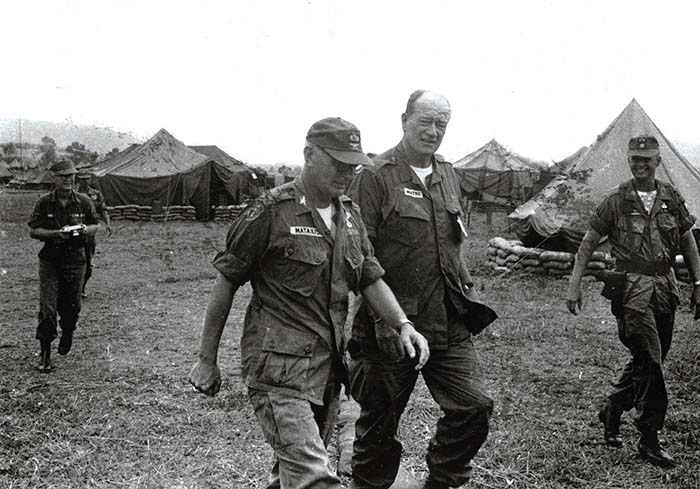
There were several updates of the Soviet RPD during its service life, resulting in at least five variants, however most of the changes were relatively minor. The People’s Republic of China adopted the third variant of the Soviet RPD, and manufactured them as the as the Type 56. The third model featured dust-covers on the feed mechanism and a folding, non-reciprocating operating handle. The fifth and final modification of the RPD (manufactured in the PRC as the Type 56-1) featured a folding magazine bracket / dust-cover and a sectional cleaning rod which is carried in the buttstock. Previously the cleaning rods were stored on the side of the weapon and often were lost.
The 7.62x39mm RPD machine gun is a gas operated, locked-breech, fully automatic only weapon that fires from an open bolt. The weapon is fed from two non-disintegrating, 50-round (Chinese belts were made in four 25 rd lengths) belts that are linked together by the insertion of a cartridge. The belts are normally contained inside of a steel drum, which attaches to a bracket on the weapon. To prepare the RPD for firing, the bolt handle is pulled to the rear and a belt is fed into the feed tray by a starter tab, which is attached to one of the belts. The belt is fed by a pawl that is actuated by a stud on the bolt carrier that fits into a curved track on the top cover. Once the trigger is pulled, the bolt group moves forward through the energy of the compressed recoil spring located inside of the buttstock. Upon its forward motion the bolt strips a cartridge from the feed belt and chambers it in the barrel. The breech is locked when its two “lugs” are engaged by a wedge on the bolt carrier forcing them outward into recesses machined into the sides of the receiver. Once the breech is locked the wedge continues forward until it strikes the firing pin, igniting the cartridge’s primer. Some of the gas pressure generated by the fired round is forced down through a port in the barrel, which acts on the head of a gas piston forcing it and the bolt carrier rearward, retracting the locking lugs.
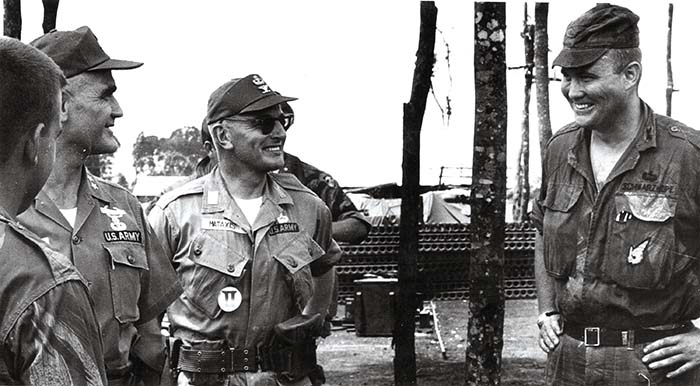
As a compromise to reduce its weight, and keep the design simple, the barrel is threaded into the receiver and pinned in place, and thus cannot be replaced in the field. The design requires the operator to be trained to fire short busts so the barrel is not overheated. This tactic requires a lot of discipline on the part of the soldier under stress in combat. The wooden handguards are not insulated and will start to smolder under long extended bursts.
To compensate for variations in ammunition or excessive fouling, the RPD is fitted with a 3-position adjustable gas regulator. The gas regulator settings are numbered and lined up on a fixed index pin. Adjustment of the gas regulator is performed by loosening and removing the regulator’s retaining nut, then pushing the regulator assembly to the right to disengage it from the index pin. However, adjusting the gas regulator is a task not easily performed in the field. The removal of the regulator can be extremely difficult, particularly on a dirty weapon that has fired corrosive ammunition. Generally a good overnight soaking with penetrating oil, a mallet and sometimes heat is required to free up the regulator to facilitate its adjustment. The RPD gas block and cylinder are permanently pinned to the barrel.
The RPD light machine gun was relatively unknown to most in the West, until the United States’ entered what would become known as the Vietnam War. During that conflict, U.S. infantrymen became well aware of the RPD that was used effectively against them by the North Vietnamese Army (NVA) and the Viet Cong guerrillas (VC). The RPD, with its (actual) cyclic rate of 750 to 850 rounds per minute, was especially effective when used by the enemy to ambush U.S., Allied and ARVN troops. During the Vietnam War the U.S. media often reported that the enemy was using weapons supplied by the Soviets. The reality was the enemy was using Soviet designed weapons, but the majority of them were manufactured and supplied to the North Vietnamese by China.
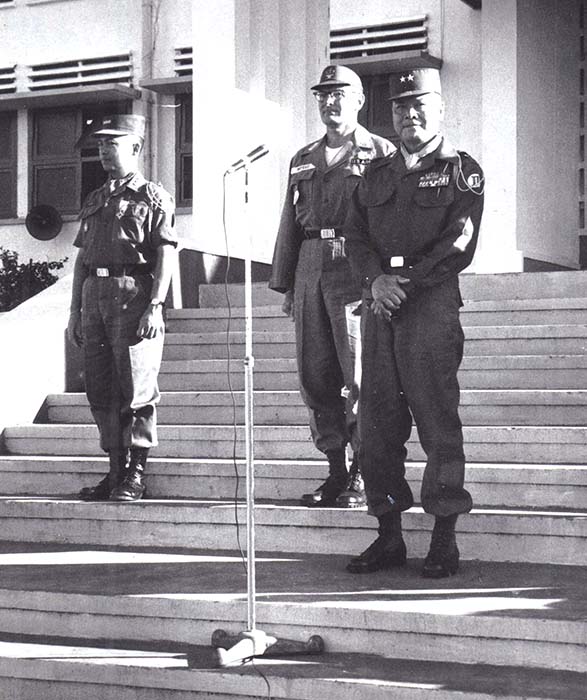
The Battle
The Chinese Type 56 light machine gun (RPD) featured in this article was captured in a fierce battle that was fought in November 1965, with the 32nd and 66th Regiments of the People’s Army of (North) Vietnam. The battle took place in the Chu Pong Mountain/Ia Drang Valley area located in the Central Highlands, South Vietnam. The encounter was the first major engagement between U.S. Army soldiers and regular units of the North Vietnamese Army. The first phase was conducted during 19 to 26 October 1965 by the Army of the Republic of (south) Vietnam Armored Task Force, the second phase took place from 27 October to 17 November 1965 by the U.S. Army’s 1st Air Cavalry Division, and the third phase from 18 to 26 November by the Army of the Republic of (south) Vietnam Airborne Group. Both sides suffered heavy casualties; the U.S. reported that nearly 250 U.S. soldiers were killed, but claimed to have counted about 1,000 North Vietnamese bodies on the battlefield and estimated that more were killed by air strikes and artillery. The battle was documented in a book We Were Soldiers Once…and Young: Ia Drang – The Battle That Changed the War in Vietnam written by (then Colonel) Harold G. Moore, the U.S. commander in the battle, and UPI reporter Joseph L. Galloway who was present to cover the battle. A Hollywood movie We Were Soldiers Once was released in 2002 based on the book. (Editor’s note: Please read The Interview with Joe Galloway in this issue of SAR)
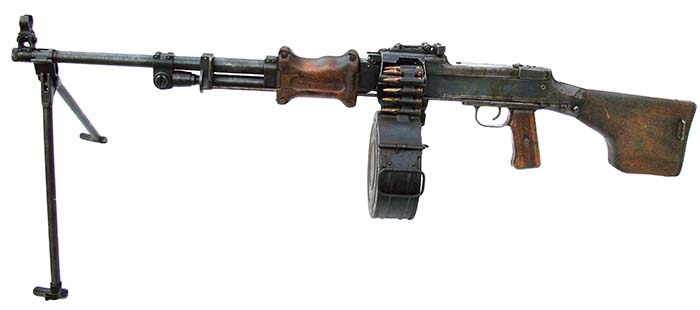
War Trophy
There are relatively few transferable original RPD light machine guns in the U.S. Most of them that are in the system were registered during the brief 1968 Amnesty program. The subject of this article is a Chinese Type 56 light machine gun serial number 220840, manufactured in Chinese arms factory number 36. The captured weapon was presented as a gift to the U.S. Senior Advisor of II Corps (then) U.S. Colonel Theodore Mataxis, by South Vietnamese Major General Vinh Loc, ARVN commander of II Corps. (Editor’s Note: the Army of the Republic of VietNam- ARVN- divided their military locations in-country into 5 Corps and the US used those designations- the northernmost was I Corps “Eye Corps” and II Corps “Two Corps” was next in line to the South). The Chinese Type 56 light machine gun is a copy of the Soviet designed RPD. The type 56-1 was also manufactured in China, the major difference was the 56-1 model featured a drum bracket that could be folded to act as a dust cover for the receiver, and a sectional cleaning rod that was stored inside the buttstock.
Theodore Mataxis was a firearms enthusiast and collector. During the machine gun amnesty in the fall of 1968, the General was serving in Iran as the Chief of the Army Section of ARMISH/MAAG (a Military Assistance Advisory Group). Fortunately he found out about the brief amnesty in the U.S. and was able to register at least eleven submachine guns and machine guns collected from the three wars he had participated in during his career. One of the weapons was the Chinese Type 56 RPD featured.

Brigadier General Theodore C. Mataxis
Theodore C. Mataxis was born in Seattle, Washington on 17 August 1917. He enlisted in the Washington National Guard in 1939. He was commissioned a 2nd lieutenant in June 1940. He served as battalion commander of the 2nd Battalion 276th Infantry during the last German offensive in the winter of 1944. He participated in the breakthrough of the Siegfried line, liberating the towns of Forbach and Oeting, France. After Germany’s surrender Major Mataxis was assigned as commander of the 1st Battalion, 3rd Infantry Regiment on occupation duty. A street in the village of Oeting, France was named in honor of General Mataxis.
He volunteered for the Korean War in 1952, where he first served as 17th Infantry Regiment executive officer, next assuming command of the regiment during bitter campaigns for Triangle, T-Bone and Pork Chop Hills. In 1964, he volunteered for Vietnam, where he served as a senior ARVN adviser, II Corps, for 16 months. He became deputy commander of the 82nd Airborne Division for eight months. In 1970, he returned to Vietnam, where he served as assistant division commander to the Americal Division and as acting division commander. In February 1971, he was assigned as chief of the Military Equipment Delivery Team for Cambodia in Phnom Penh until his retirement in April 1972. During his military career, he received the Silver Star; two Purple Hearts; four Bronze Stars for Valor; Army Commendation Medals for valor with three palms; Distinguished Flying Cross; Air Medal for valor with 30 oak leaf clusters; four Vietnam Crosses of Gallantry; Legion of Merit with two oak leaf clusters; Joint Service Commendation Medal; Vietnamese Air Medal; National Order 5th Class, Honor Medal; United Nations Service Medal for duty in Kashmir; Vietnamese Service Medal and the U.S. Distinguished Service Medal for service in Cambodia.
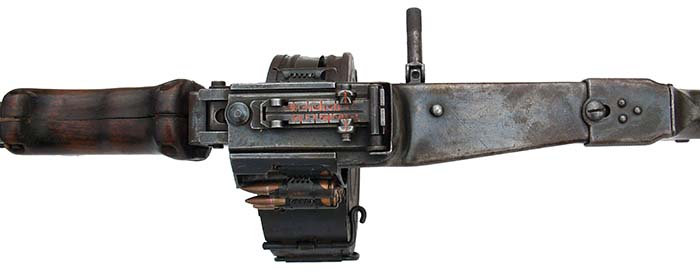
Following his retirement from the US Army, Brigadier General Mataxis served as the Commandant of Cadets at Valley Forge Military Academy. During his tenure at the academy, the 1981 Hollywood movie TAPS was filmed. General Mataxis’ office was used as one of the sets in the film, a few of his weapons and other war trophies displayed in the office can be seen in the film.
While in his 70s General Mataxis served in Afghanistan as an advisor with Afghan forces fighting the Russians.
Theodore Mataxis passed away in Denver, Colorado on 8 March 2006, he was 88 years old.
The General’s arms collection was offered at auction by his family.

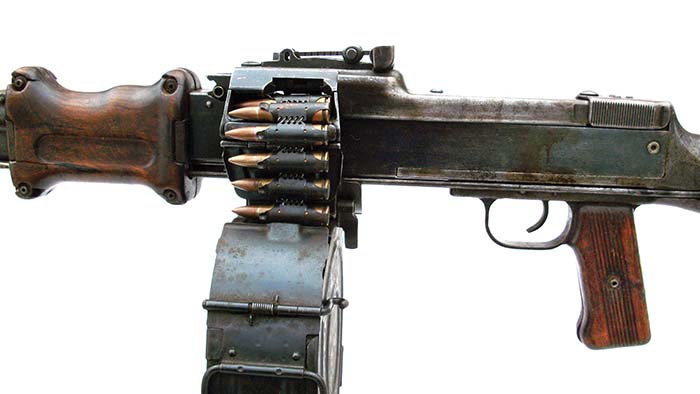
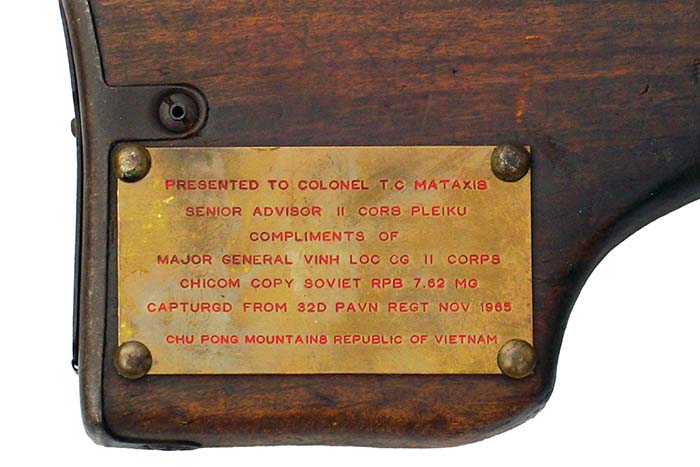
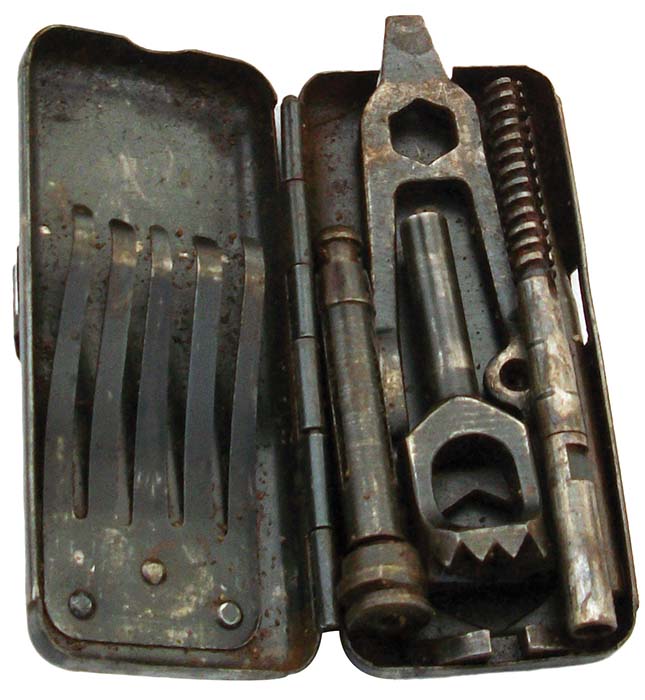
| This article first appeared in Small Arms Review V20N9 (November 2016) |












